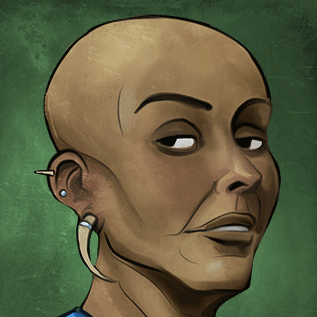It's a medieval painting of a beaver chewing off it's own balls- Oh fuck, nevermind. I mixed it up with my old picture of Ted Cruz campaigning for Trump in 2016.
I don't think that's a beaver, even by the fantasical standards of Medieval art
You would be wrong, then. Saw a couple of these bad boys at an exhibition two years back. To think this is what academia has been hiding from you.
Dear god. I understand when it's fucked up looking lions, but beavers??? Seriously?
If it wasn't for zoo visits and pictures I wouldn't be that sure what a beaver looked like either (other than that they're the size of a small dog and brown), and I've seen them in the wild. The chances that a monk translating greek fables would have been out in the wilderness to study large rodents are slim.
They would at least know somewhat what a lion looks like from art.
The chances that a monk translating greek fables would have been out in the wilderness to study large rodents are slim.
They could know beavers from the kitchen, though. In medieval Europe, beaver was the only mammal that could be eaten while fasting, as it was seen as a type of fish due to the scaly tail and semi-aquatic life. Fish is ok to eat while fasting, so beaver tails were a mainstay in many monasteries. And we're talking about a kitchen where you don't take the pre-cut beaver steaks out of the freezer, we're talking "here's five whole dead beavers that just came in, we need to start chopping these bad boys up right after the morning vigil." They knew fully well what they looked like, they just had to look at their plates to study the tail in all its intricacies. Yet they drew these very tails as furry, branched scrollwork things. Because realism just wasn't something people bothered with at all in medieval art. It was entirely formalist. You can tell it's a beaver not because it looks like a beaver, but because it bites its balls off, and it will always only be shown looking like a weird dog-weasel biting its balls off because that's the proper way to draw a fucking beaver. In artwork like that, you can't tell one dude apart from the other by looking at their faces because everybody has the exact fucking same face, but you can always say exactly which aristocratic rank one holds and maybe even which house they're from because they're shown with the appropriate crown and coat of arms. Same for religious figures - you can always tell who's a saint and how saintly they are by looking at their halo, and each saint is depicted with some icon unique to them, an item they're holding or something like that, but apart from these signifiers they look like clones.
Doing art the classical way, trying to make it look realistic, studying anatomy and understanding how the muscles run under the skin and all that other work that goes into making realistic art, that wasn't a thing in Europe until the 13th century came around (or the 15th if we're talking outside of Italy). That was just lost to time. What mattered in art was convention, not expression or depiction.
The beaver thing is something that came up when a Quebecois bishop wondered if they could eat some beaver at lent. So that was well into the 17th century. Since then the myth that everyone ate beaver in medieval times has spread, they would have been more likely to eat some of the absolute shitload of herring that got sold from the north sea or some lamprey eel if they wanted a more "meaty" fish.
Beaver was already mostly gone from central and southern europe in medieval times.
I have to assume someone described very poorly what a beaver looked like to whoever made this
:beaverlickballs:
reminds me of monks drawing elephant, even though they never seen one
How come it looks absolutely nothing like a beaver lol. People just didn’t know wtf they looked like I guess?
Monks who drew it never actually saw a beaver themselves.
To think europe could have had all sorts of local legends about beaver balls.
The Eurasian beaver was mostly hunted to extinction by the time of the European exploration of North America.

